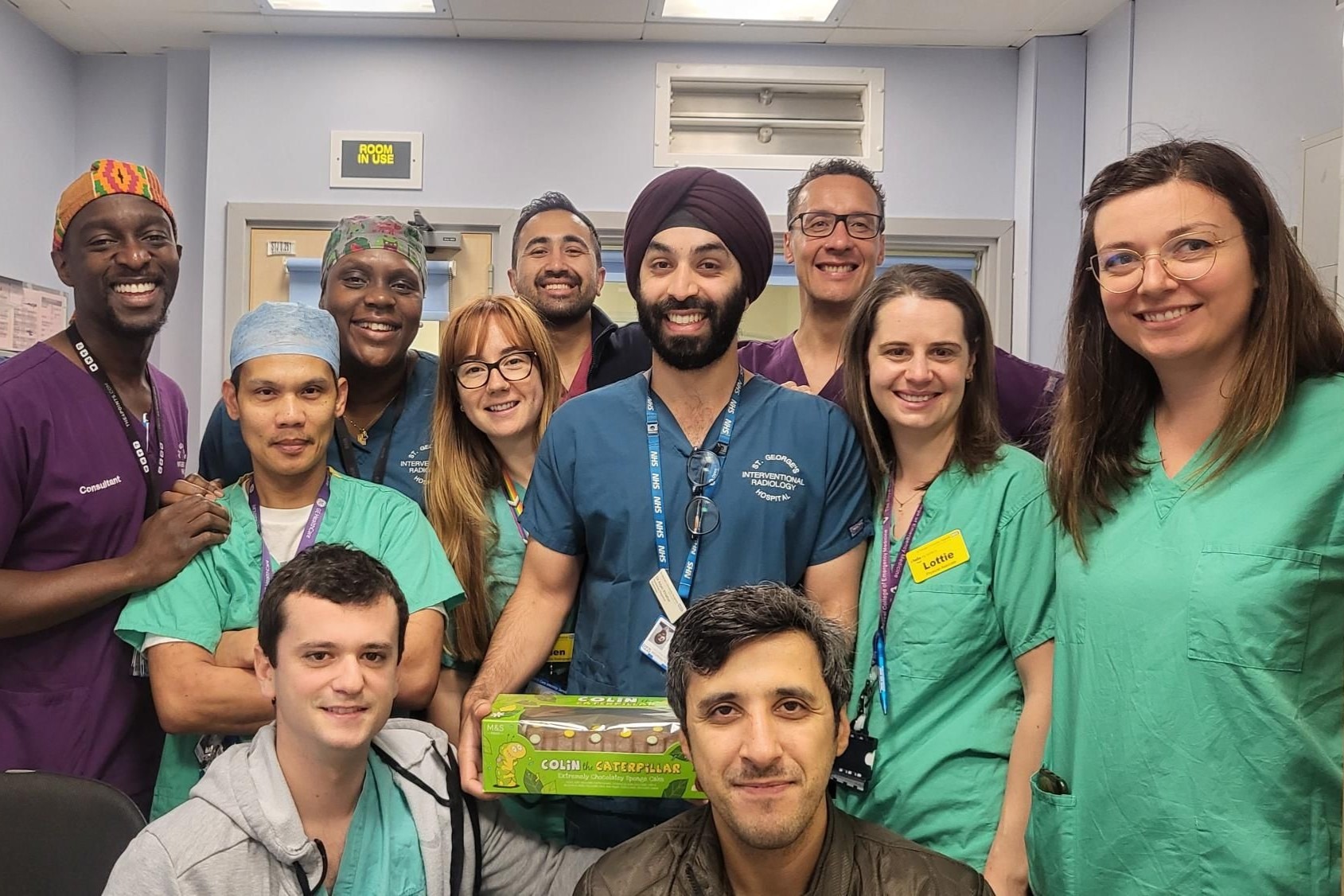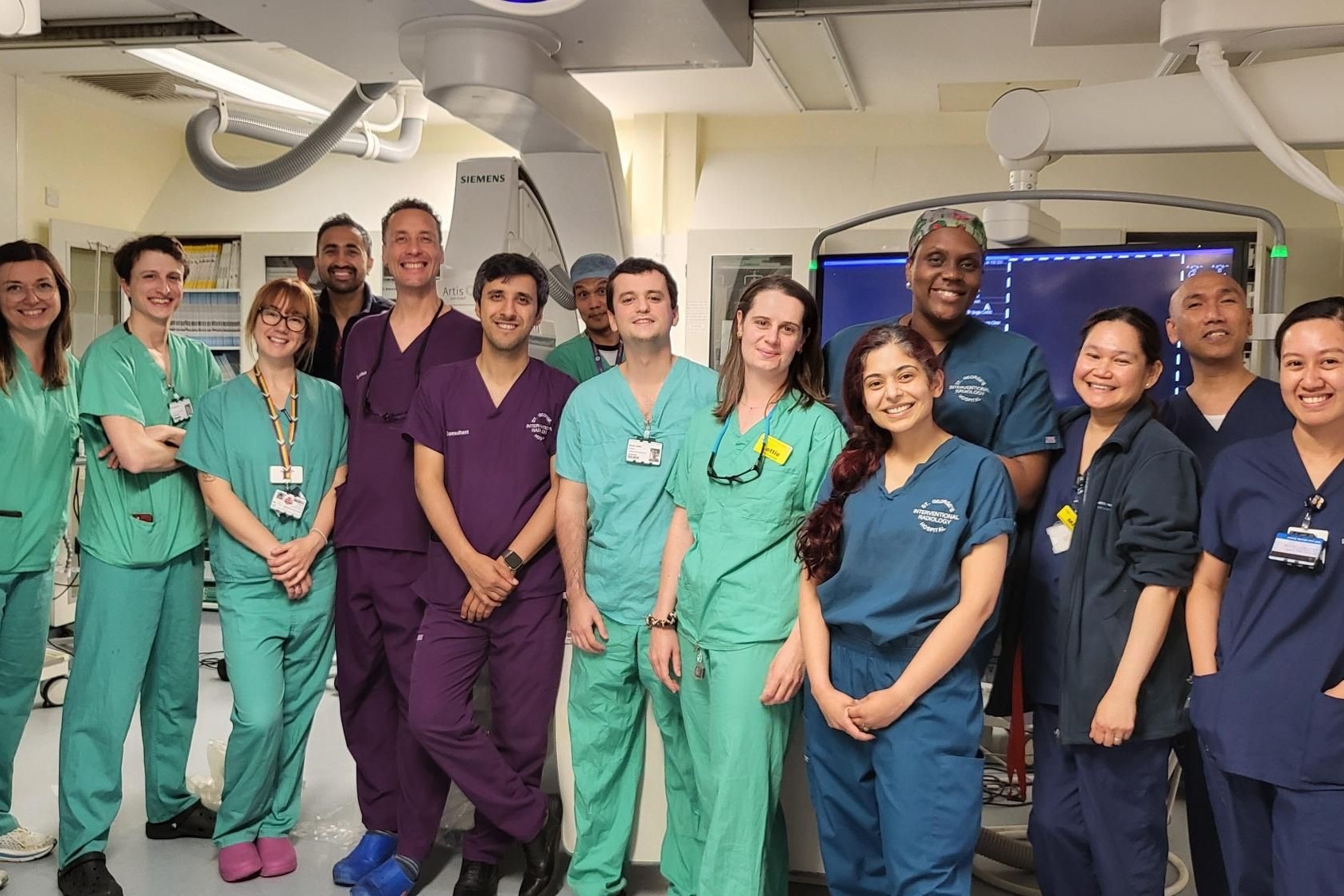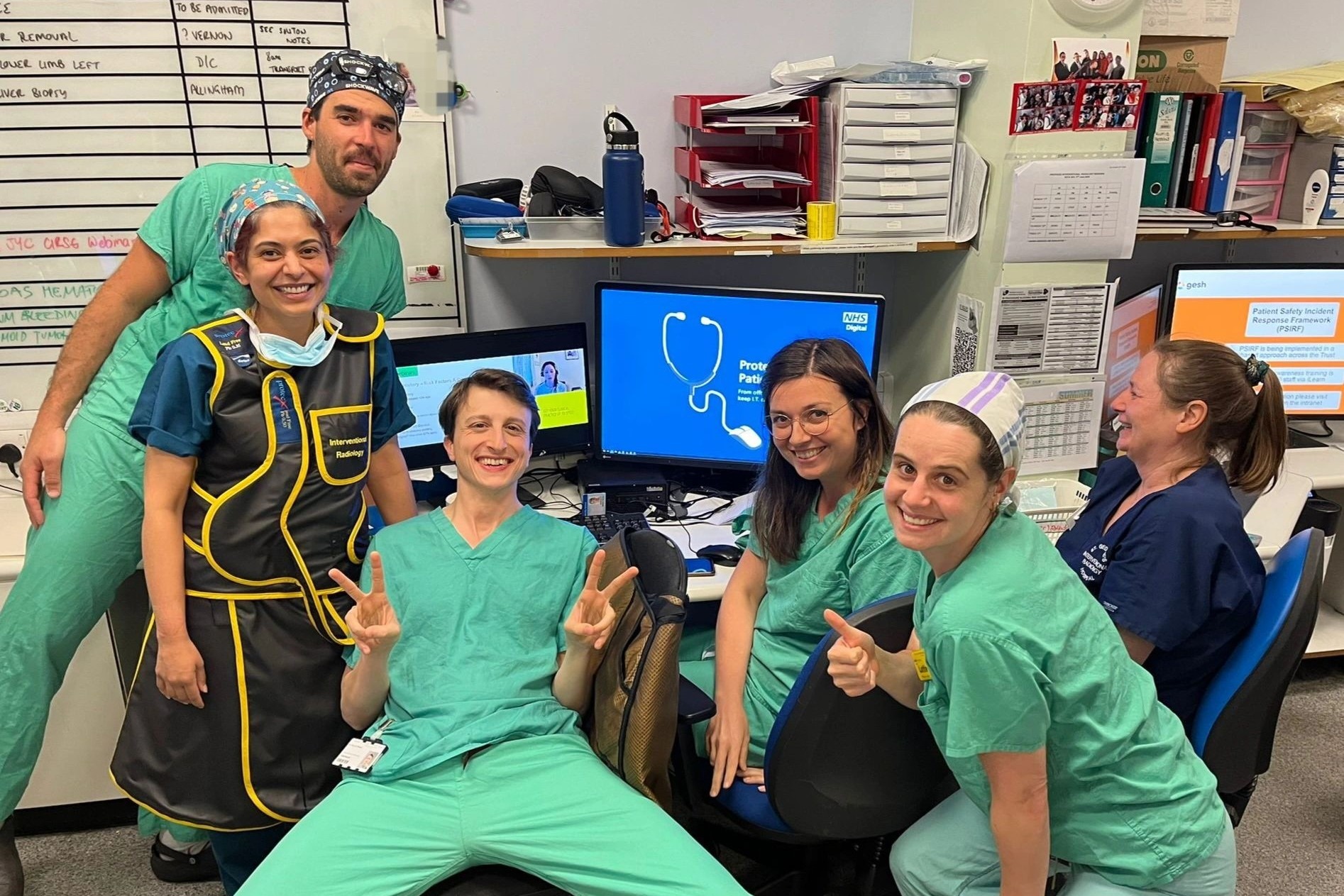This opportunity to dive into a big IR department for a whole month allowed me to confront some new techniques, solidify others, and bring some new unexpected ideas to my mind. I will have new management techniques that I will be able to offer to some patients. Having seen and learned new ways to do a procedure may not always change my first approach, but will certainly give me more options for tricky cases I could be stuck in if I only knew one way to proceed.
There were some techniques I learned almost from scratches, like PTA, below-the-knee procedures, and arterial and veinous thrombolysis. Peripheral procedures are mostly managed by vascular surgeons in France, so it was interesting to discover new procedures, new techniques, and also new amazing devices available for such cases.
Another highlight of the fellowship was the multidisciplinary procedures the IR team was part of. For example, for complex cases of abnormalities of placenta implantation, anaesthesiologists, obstetricians, neonatal paediatricians, and interventional radiologists work together to ensure the safety of the mother and the baby during a C-section. IRs insert compliant balloons in both internal iliac arteries to decrease blood loss, which can be massive and impossible to manage with surgery and anaesthesiology alone.
I could also experience IR outside the operating room, during clinics and MDTs with Dr. Ratman, who is highly skilled in lymphatic and vascular abnormalities. It was enlightening to see new patients with her, but also to see how she treats patients who are in the midst of their treatments and patients who have completed their treatment who she still follows up with. The clinical aspect of IR – one of the new goals of our IR generation – was embodied by her strong relationship with patients.
And I can’t help but mention the gender balance of the team, with brilliant women leading (or formerly leading) teams, highlighting the importance of a mixed team when striving for a balanced and steady environment of work.
It was not easy to choose the hospital I wanted to do this fellowship, but one of the important criteria was to discover a whole new team in a whole new hospital in a different country. And I’m happy to say that I was not disappointed, on the contrary! We had the opportunity to share a lot, about IR, radiology, health systems, and simply life. I am very thankful for their warm welcome and their consideration about my tricky situation.



